Scott Addict RC 15 review
The latest iteration of Scott's lightweight bike is ridden by Team DSM – this mid-range version brings pro-level performance to a much lower price point
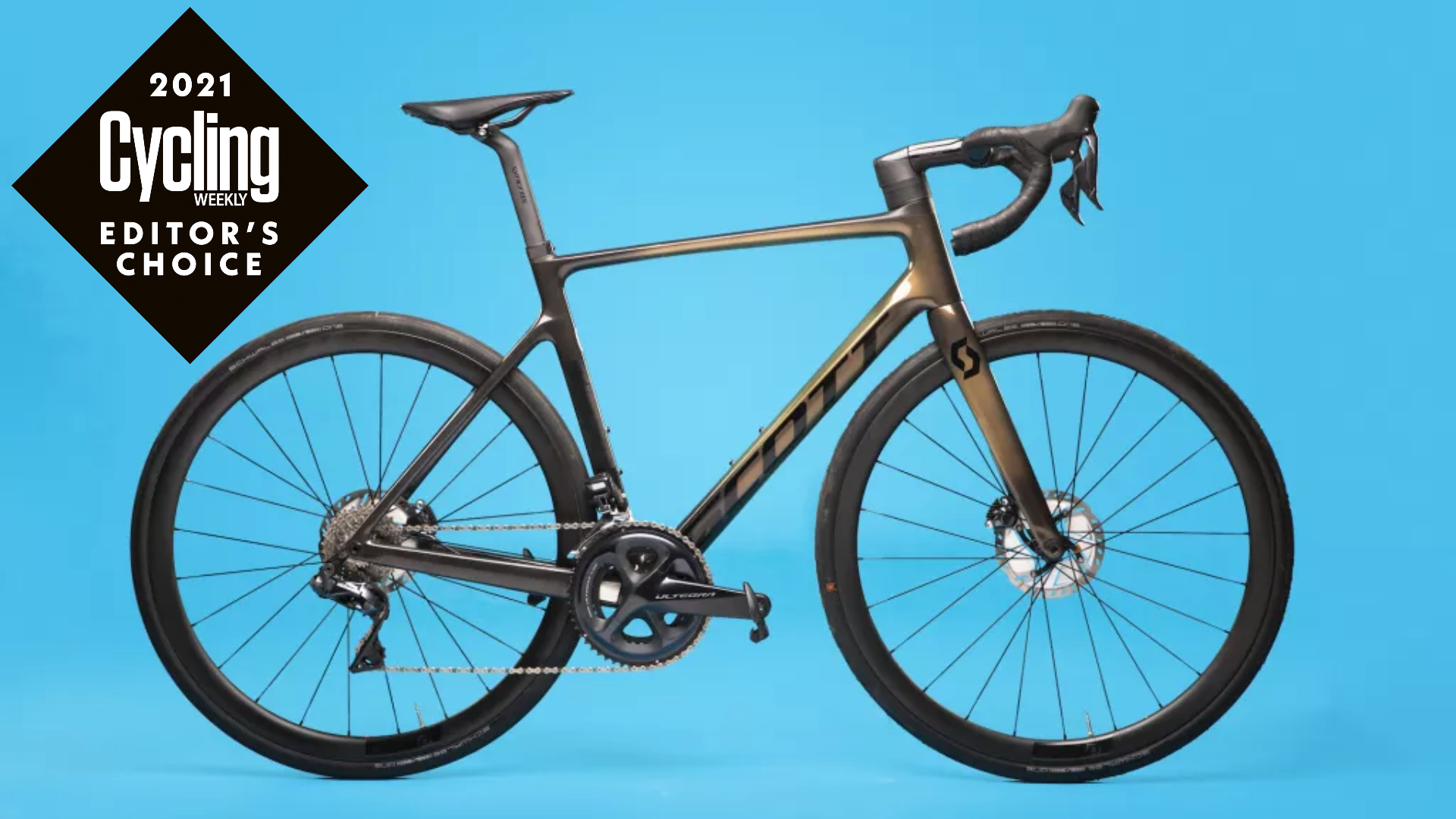
The Scott Addict RC 15 is impressively sophisticated with its integrated and aerodynamic frame and good-quality specification, but for value it can’t beat the Giant TCR Advanced Pro 0, which has a power meter. Although it doesn’t feel as racy as other bikes in its category, probably due to the comfort built into the design, actual ride data proves it is as fast as any, and handling is up there with the best.
-
+
Cable integration
-
+
Wheels
-
+
Handling
-
+
Comfort
-
-
Saddle
-
-
Tyres
You can trust Cycling Weekly.

We tested the Scott Addict RC 15 as part of a four bike shoot out which also included the BMC Teammachine SLR TWO, Specialized Tarmac SL7 Expert and Giant TCR Advanced Pro 0. Each bike was tested with its stock tyre, and a control tyre (Schwalbe Pro One TLE, 25mm), using the same test loop which covered 32 miles and included ascents and descents of Leith Hill and Box Hill in Surrey.
The other reviews and final conclusions will be published in Cycling Weekly magazine, on Thursday April 29.
The Scott Addict has a long and distinguished history in the pro peloton. The original version was claimed to be the lightest production frame at 780g when it launched in 2008; more recently it was powered to victory at the Vuelta with Simon Yates in 2018; world champion Annemiek Van Vleuten rode a rainbow-themed Addict in 2020 (though she won the actual 2019 title race on the aero Scott Foil) and it is now the bike of Team DSM and ridden by Romain Bardet et al.
As with the other bikes in this test, the pro team version costs about twice as much as the consumer one and it’s not just down to the spec: Scott uses a carbon called HMX SL for the £11,889 Addict RC Ultimate, while for the RC 15 it’s the second-tier HMX. As the suffix suggests, the Ultimate is made from lighter, stiffer material and this, along with a lighter groupset (SRAM Red eTap AXS v Shimano Ultegra Di2) and wheels, makes it almost a kilo lighter than the RC 15. The geometry is identical, however: the Addict RC 15 is an undiluted race bike.
Scott Addict RC 15: frame and fork
The Addict is Scott’s climbing bike and the Foil the aero bike but, as we’re seeing with other brands, the twain are beginning to meet. In the case of Specialized, the lightweight Tarmac SL6 and the aero Venge have already met, with the Tarmac SL7 the result of their liaison.
So this latest iteration of the Addict already borrows some of the Foil's aero characteristics. In fact there's an aerodynamic feature almost everywhere you look, from the fully integrated cabling at the front to the kammtail seatpost and dropped seatstays at the rear. Scott also says its patented airfoil design has been applied to the main tubes.
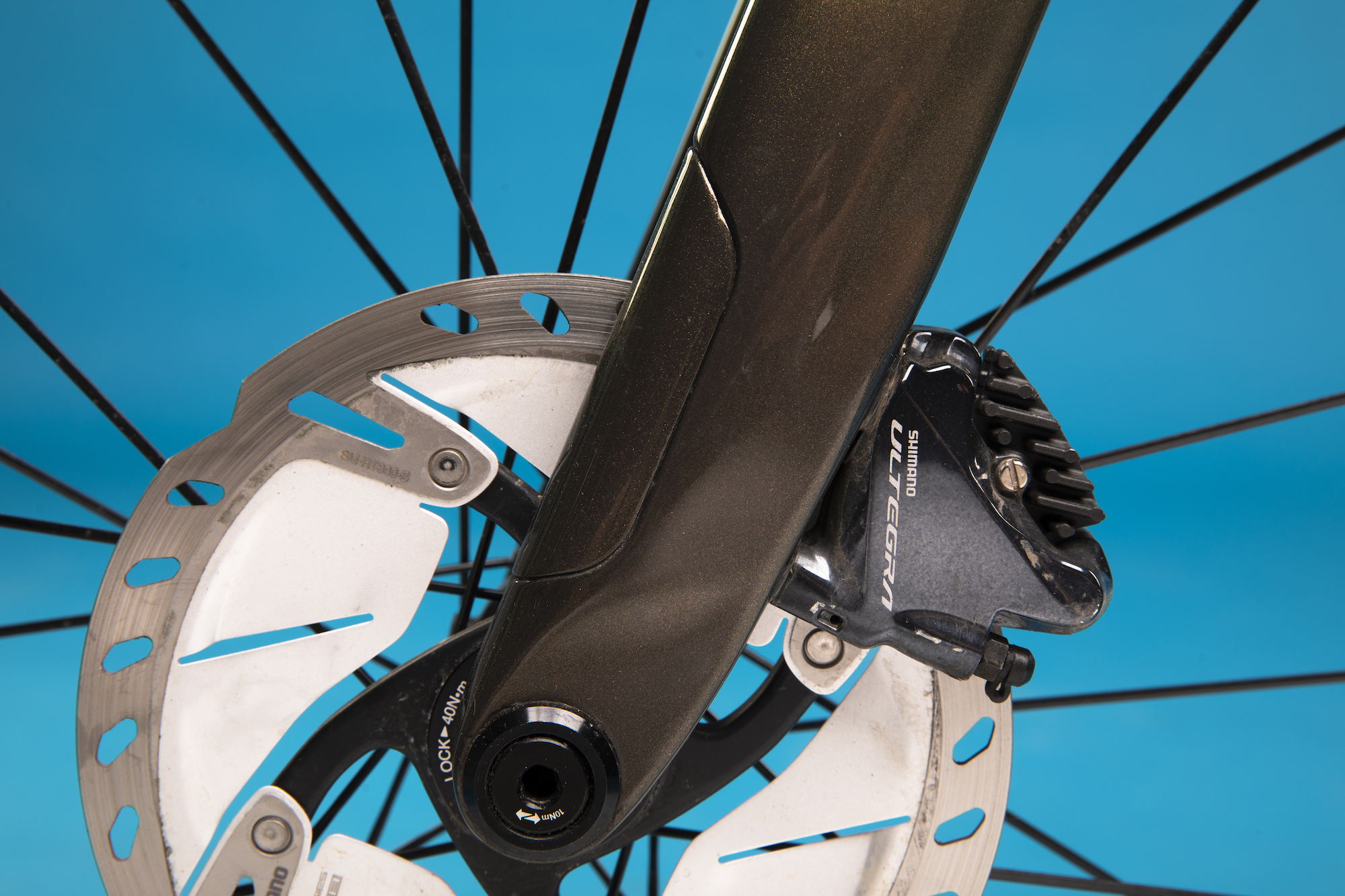
To underline the Addict's aero ambitions there are some really smart little aero tricks like the magnetic cover on the caliper mounting bolts on the left fork leg. Overall it has a beautifully clean aesthetic.
Although the size 56 is designated ‘large’ (didn’t 56 always use to be medium?) the geometry is fairly standard, with head and seat angles at a classic 73° and the stack and reach as you’d expect for a race bike of this size: a ratio of 1.43, which is neither too upright nor crazy aggressive.
Our test bike did come with a full stack of spacers under the stem, making the front end a little tall and the super integrated front end makes it a little tricky to fettle: it’s no longer a case of simply swapping the spacers under or over the stem: although the spacers are split, so that you can remove them without disconnecting the hydraulic hoses and Di2 wires that run through the middle of them and down into the head tube, the cover-cum-top cap has to sit directly on top of the stem, meaning the steerer has to be cut if it’s to be used – and it definitely wrecks the clean look if it’s not used.
Components
Since Shimano Ultegra Di2 is specced on all four bikes we tested back to back there’s no need to go into the pros and cons – suffice to say there aren’t many cons; it’s a superbly functioning groupset.
Perhaps the only part of it that deviates from the usual disc road bike set-up is the 160mm rotors both front and rear.
The Addict RC 15 gets Capital 1.0 35 Disc wheels from Scott’s in-house brand Syncros. These are pretty decent carbon wheels, with a retail price of over £1,000 if bought separately and weighing just over 1,500g. They have a modern, wide internal rim width at 21mm and they’re tubeless ready but Scott supplies them with tubes and Schwalbe ONE Race-Guard 28mm clinchers. These are good all-rounder tyres but for us would be the first upgrade: this bike deserves faster, lighter rubber, as we found. Bigger is not always better. The Addict has clearance for 28mm tyres and perhaps Scott has specced them just because it can.
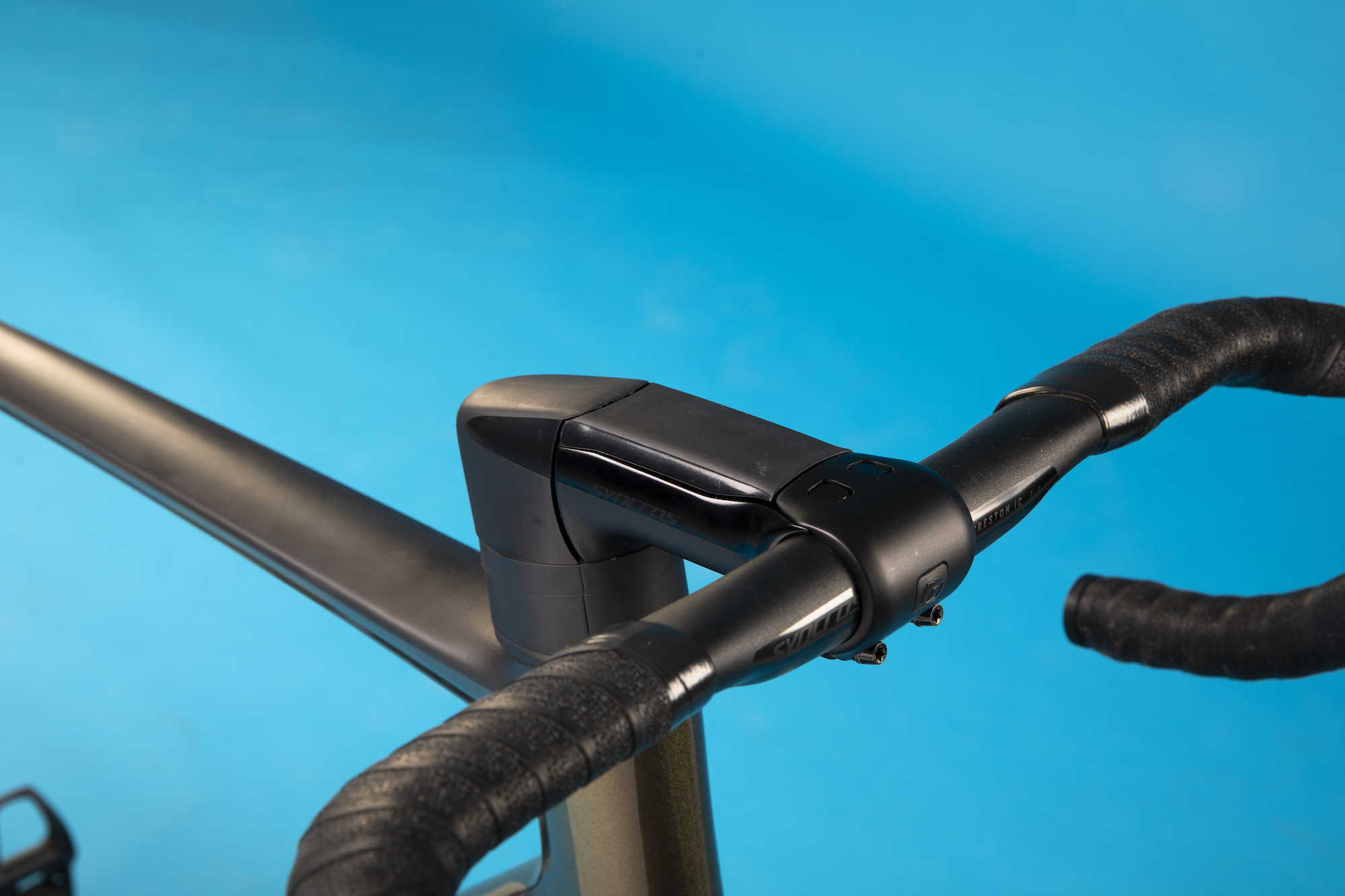
The finishing kit is also Syncros branded: the proprietary bar and stem are separate aluminium components (compared with the pro-level RC Ultimate's one-piece carbon bar/stem) but they work with the frame’s clever internal cable routing (which is also mechanic-friendly, according to Scott, with channels built-in) to give a very neat front-end integration with not a cable in sight. The 120mm stem and 42mm bar are sensible choices for this size. Call me old school, but a 56cm bike with a stubby 100mm stem, like the Specialized Tarmac SL7 Expert, just doesn't look right.
The Syncros Belcarra saddle would be the second upgrade. It was hard and unforgiving so that unless saddle height was perfect to the fraction of the millimetre it was uncomfortable.
The unusual seatpost clamp arrangement is aimed at cutting weight, adding a claimed 12g and Scott says it's a carbon-friendly design too. It uses a grub screw on a band at the front of the seatpost and feels flimsy, using a 3mm Allen key to tighten. Using something as crucial as a seatpost clamp to save weight isn't a great idea in practical terms, but it worked fine – in fact better than some wedge designs that can easily get, erm, wedged – and we didn't experience any seatpost slippage.
Ride
I was a bit preoccupied with the uncomfortable saddle on my first ride on the Addict RC 15. I also felt as though I should have been going faster for the amount of effort I was putting in (admittedly based on nothing more than old-school RPE with heart rate as a rough guide) – but in the end was surprised to post my fastest time on that particular route, which I ride regularly – since last summer. I put the slightly sluggish feel down to the big, heavy all-season tyres, but they clearly weren't as slow as they felt.
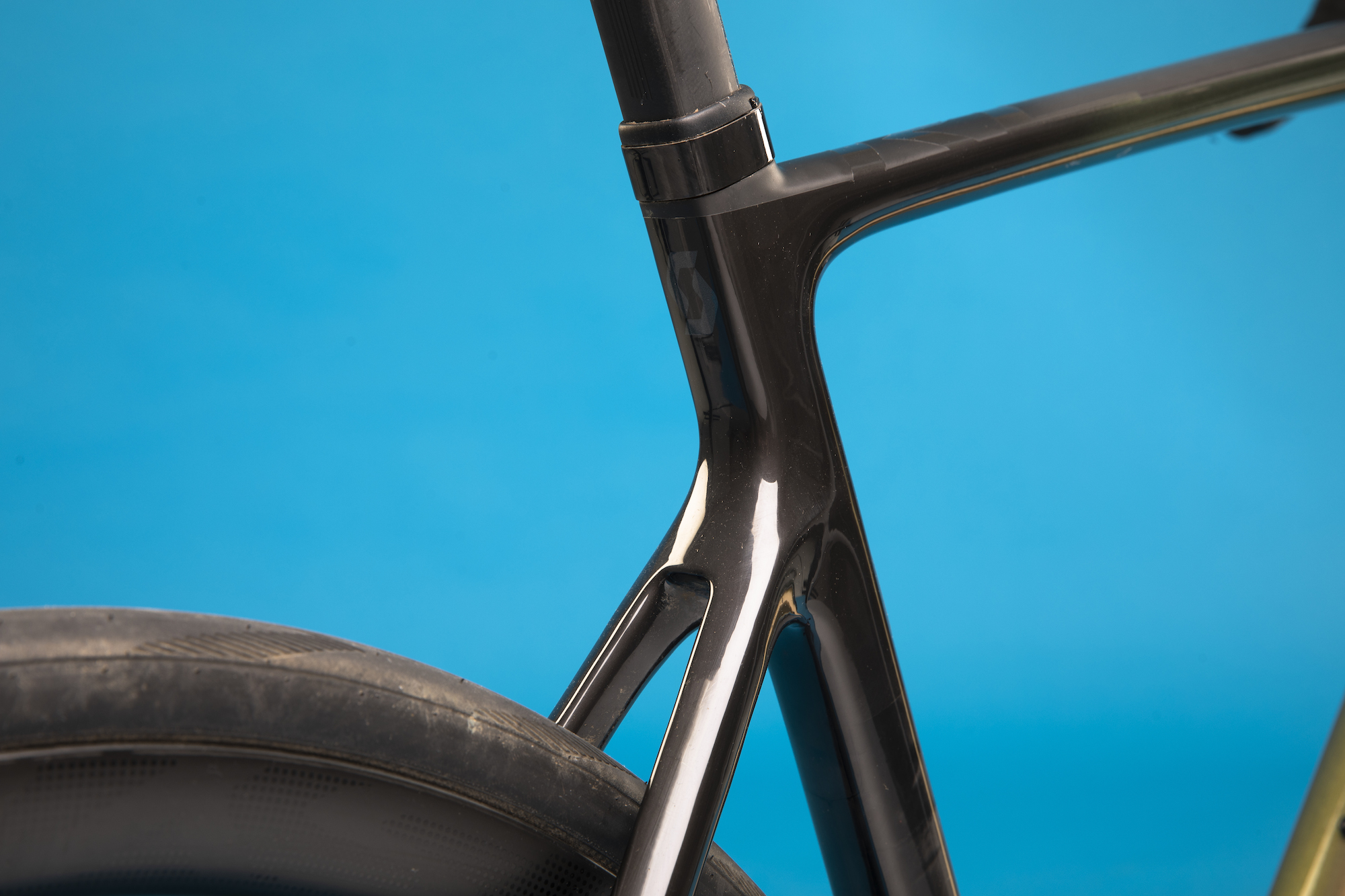
Next time out, I had swapped the 28mm Schwalbe ONEs for a pair of 25mm Schwalbe Pro ONEs, which we were using as the control tyre for the four race bikes tested together. This saved 30g per wheel and pepped up the Scott’s ride feel, as I had hoped it would. On the first ride, although the bigger tyres had cushioned away some of the ride feel, I had nevertheless been impressed with the Scott’s cornering – very, very surefooted. With the superior, lighter Schwalbe rubber it not only retained that feeling of being able to corner at any speed but it felt livelier, more connected and much less cruisy.
Even with the racier tyres, the Scott Addict RC still didn’t feel quite as responsive as the three other bikes on test – the BMC Teammachine TWO, the Giant TCR Advanced Pro 0 and the Specialized Tarmac SL7 Expert – but on the most challenging section of the test loop, which climbs steeply to the top of Leith Hill and then descends at up to 50mph down to Dorking, it was the fastest of the four bikes, which serves as a reminder that just because a bike feels fast, doesn’t mean it is fast. The slightly muted ride quality compared to more seat-of-the-pants feeling bikes – the BMC Teammachine in particular – clearly didn’t slow it down. On the descent it felt 100 per cent in control and under braking the frame and fork perfectly countered twisting forces from the 160mm rotors front and rear.
To sum up the riding experience I would say the Scott Addict RC 15, although every bit as stiff, doesn’t provide as direct a feel as those other three bikes and is therefore missing a little of the excitement. However, it is deceptively fast, its handling is perfectly balanced, it corners and descends incredibly well and for longer rides, where settling in and preserving energy are arguably more important, the extra degree of comfort and isolation from the road surface could end up giving it an advantage.
Value
The Scott Addict RC 15 is more expensive than the BMC Teammachine TWO, the Giant TCR Advanced Pro 0 and the Specialized Tarmac SL7 Expert, which all have Ultegra Di2. Like all of those bikes, the Scott has a frame made from carbon that’s one rung down from the stiffest and lightest used in the pro-level model.
Scott has specced good-quality carbon wheels – the BMC and the Spesh both get aluminium – but it doesn’t have a power meter, which the Giant does.
At 7.78kg it’s the second lightest of the four behind Giant (7.37kg) and ahead of the BMC (8.01kg), the Specialized (7.81kg). That was the weight before we fitted the lighter tyres, which brought it closer to 7.7 than 7.8kg.
So although the Addict RC 15's price is ballpark for a consumer race bike, it doesn’t offer the very best value out there. Having said that, although the Specialized is £300 cheaper it would need £1,000 spending on better wheels to get it to this level.

Thank you for reading 20 articles this month* Join now for unlimited access
Enjoy your first month for just £1 / $1 / €1
*Read 5 free articles per month without a subscription

Join now for unlimited access
Try first month for just £1 / $1 / €1
Get The Leadout Newsletter
The latest race content, interviews, features, reviews and expert buying guides, direct to your inbox!
Simon Smythe is a hugely experienced cycling tech writer, who has been writing for Cycling Weekly since 2003. Until recently he was our senior tech writer. In his cycling career Simon has mostly focused on time trialling with a national medal, a few open wins and his club's 30-mile record in his palmares. These days he spends most of his time testing road bikes, or on a tandem doing the school run with his younger son.
-
 'This race is absolutely disgusting': Peloton reacts to another brutal Paris-Roubaix Femmes
'This race is absolutely disgusting': Peloton reacts to another brutal Paris-Roubaix FemmesNow in its fifth edition, Paris-Roubaix Femmes is still a tough race, even for the best bike riders in the world
By Adam Becket Published
-
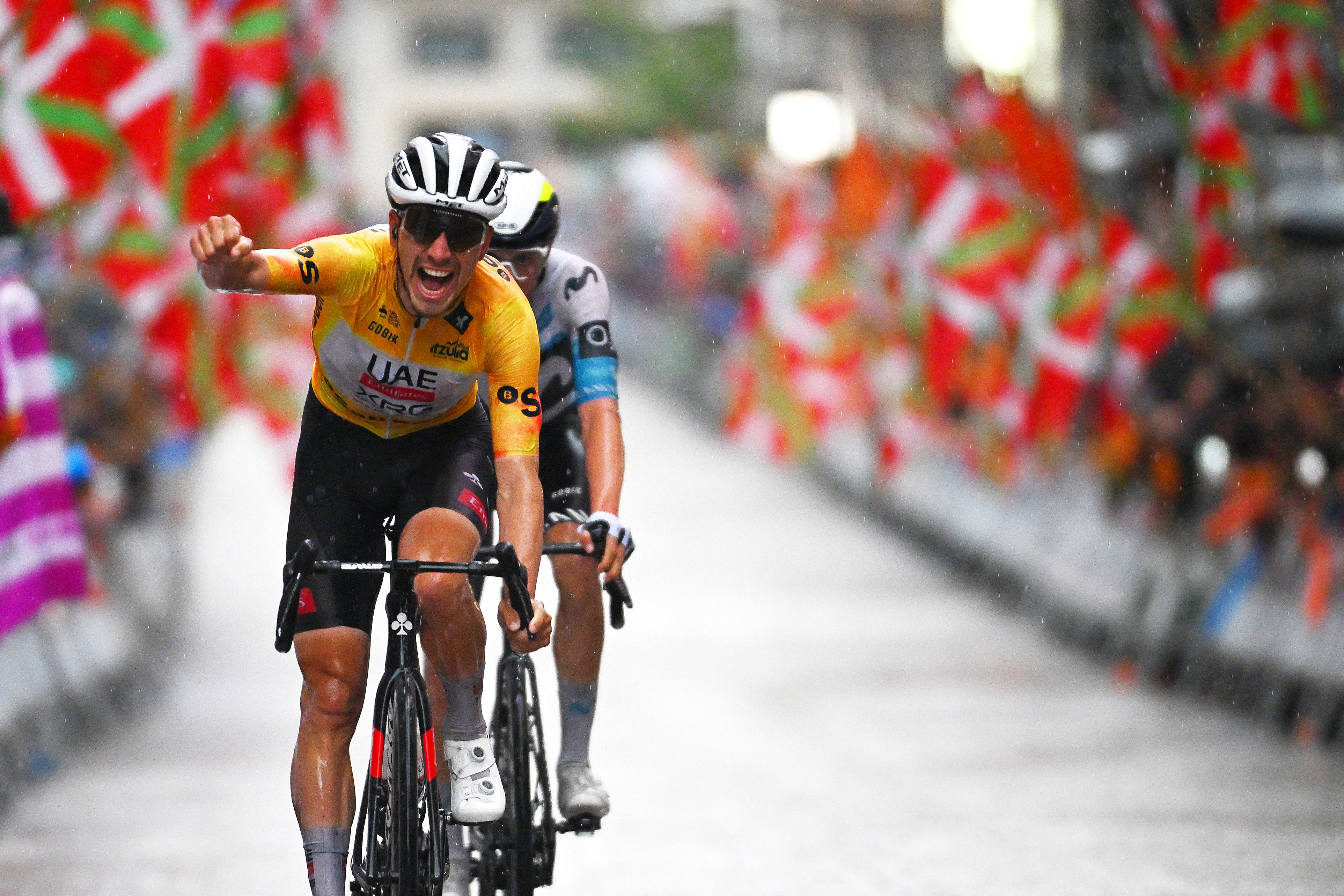 ‘It’s the biggest win of my career’ says João Almeida after crushing Itzulia Basque Country success
‘It’s the biggest win of my career’ says João Almeida after crushing Itzulia Basque Country successUAE rider wins the final stage to finish almost two minutes clear of Enric Mas on GC, with Max Schachmann in third
By Peter Cossins Published
-
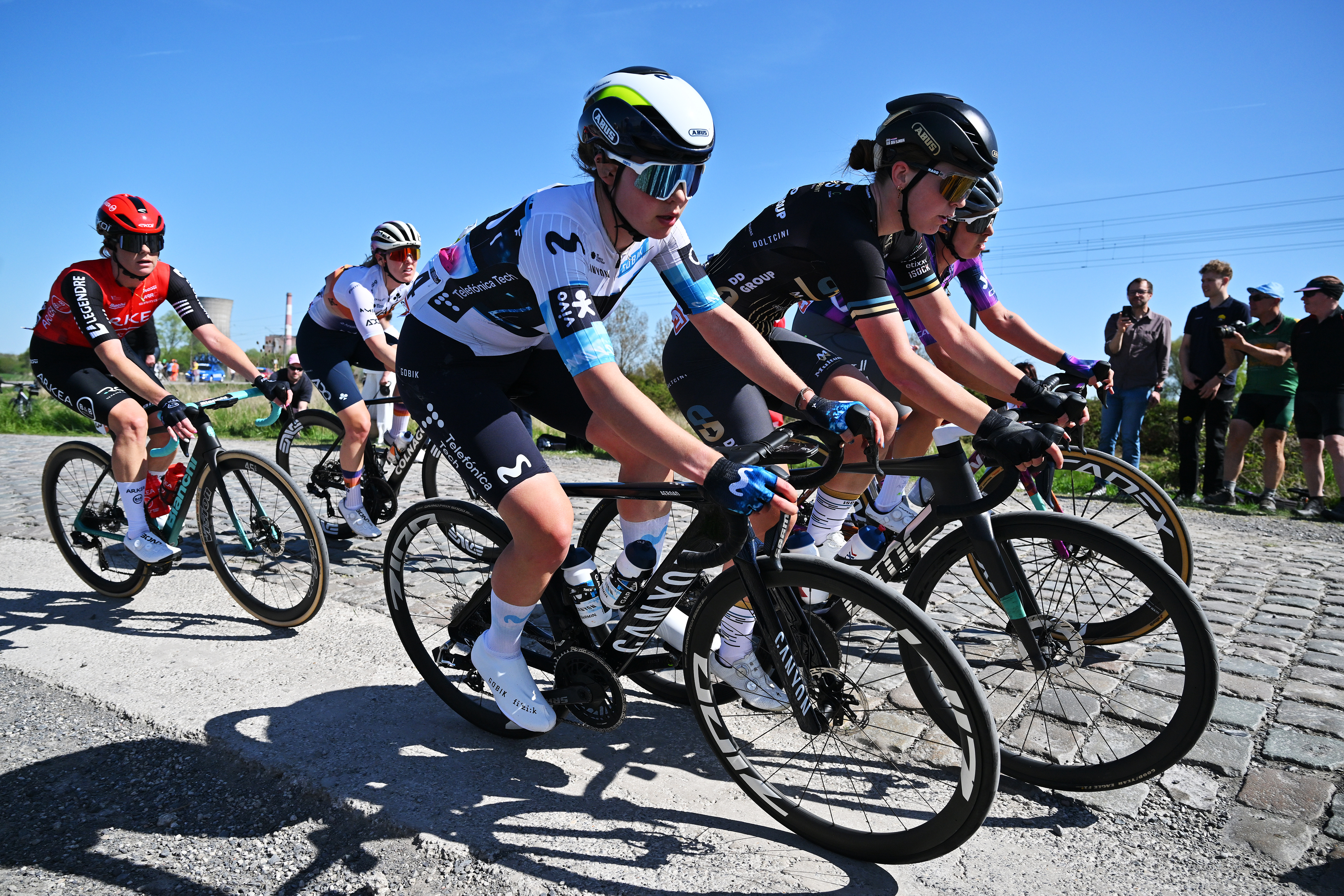 'I have an exam in a month and a half' - Carys Lloyd becomes Paris-Roubaix's youngest ever rider
'I have an exam in a month and a half' - Carys Lloyd becomes Paris-Roubaix's youngest ever riderBritish teenager and A-Level student makes it to the velodrome on debut
By Tom Davidson Published